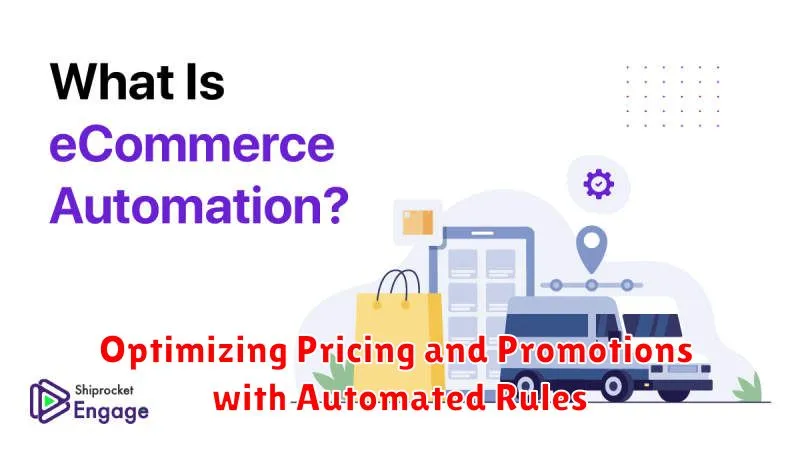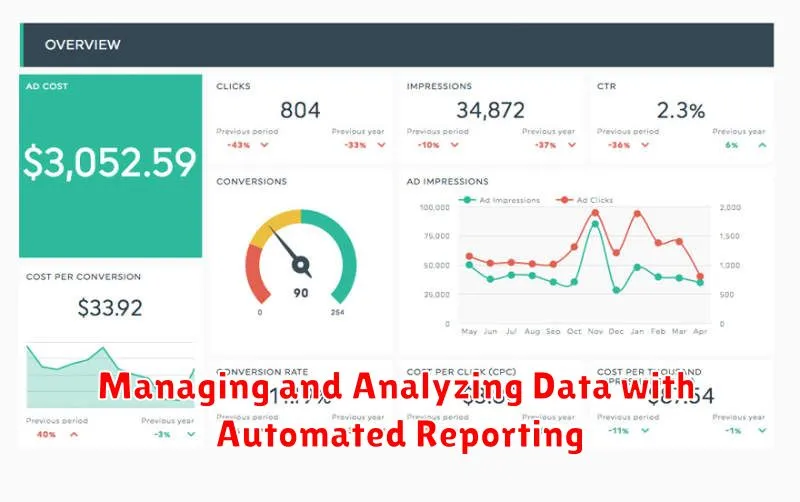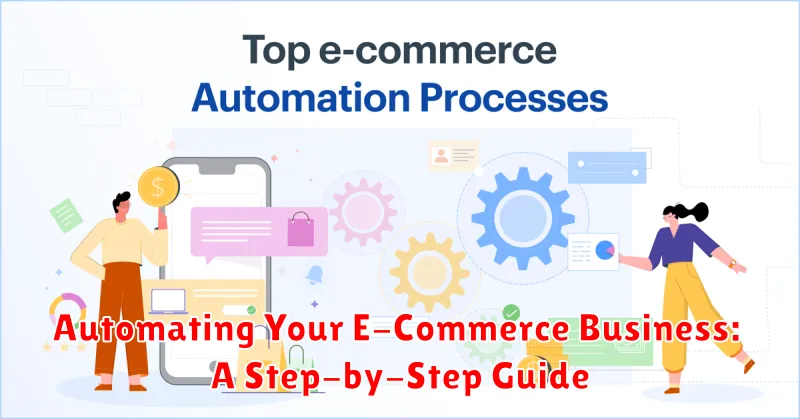In today’s fast-paced digital landscape, automating your e-commerce business is no longer a luxury, but a necessity. Staying competitive requires efficiency, and that’s precisely what automation delivers. This comprehensive, step-by-step guide will delve into the critical aspects of e-commerce automation, providing actionable strategies to streamline your operations, boost sales, and ultimately, achieve sustainable growth. Whether you’re a seasoned e-commerce entrepreneur or just starting out, this guide will equip you with the knowledge and tools necessary to transform your business.
From automating inventory management and order fulfillment to optimizing marketing campaigns and customer service interactions, we’ll cover a wide range of automation techniques. Learn how to leverage powerful tools and software to reduce manual tasks, minimize errors, and free up your valuable time to focus on strategic decision-making. This guide will illuminate the path toward a more efficient and profitable e-commerce business, empowering you to scale your operations and thrive in the competitive online marketplace.
Identifying Key Areas for Automation in Your Business
Pinpointing the right processes for automation is crucial for maximizing its benefits. Start by analyzing your current workflows and identifying bottlenecks or repetitive tasks. These are prime candidates for automation.
Consider the following key areas:
- Order Processing: Automating order entry, confirmation, and tracking updates can significantly reduce manual effort.
- Inventory Management: Automated stock updates, low-stock alerts, and purchase orders can streamline inventory control.
- Customer Communication: Automated email responses, chatbots, and personalized messages can improve customer service efficiency.
- Marketing: Automating email campaigns, social media posting, and ad targeting can save time and optimize marketing efforts.
- Reporting and Analytics: Automated data collection and report generation provides valuable business insights.
By evaluating these areas and prioritizing based on potential impact and feasibility, you can develop a targeted automation strategy for your e-commerce business.
Streamlining Order Fulfillment and Inventory Management
Efficient order fulfillment and inventory management are crucial for e-commerce success. Automating these processes can significantly reduce operational costs and improve customer satisfaction.
Inventory Synchronization: Implement a system that automatically updates inventory levels across all sales channels. This prevents overselling and ensures accurate stock information.
Automated Order Routing: Route orders automatically to the appropriate fulfillment center based on factors like location and stock availability. This minimizes shipping times and costs.
Real-time Order Tracking: Provide customers with real-time updates on their order status. This increases transparency and reduces customer inquiries.
Low Stock Alerts: Set up automated alerts for low stock levels to proactively replenish inventory and avoid stockouts.
Automated Purchase Orders: Generate purchase orders automatically based on predefined inventory thresholds and supplier lead times. This simplifies the replenishment process and ensures optimal stock levels.
Automating Customer Service and Communication
Exceptional customer service is crucial for e-commerce success. Automating key communication touchpoints can significantly improve customer satisfaction and free up your team for more complex issues. This involves strategically using automation tools to handle routine inquiries and provide proactive support.
Chatbots are a powerful tool for handling frequently asked questions. They can provide instant support 24/7, guiding customers through basic troubleshooting or order tracking. Integrating chatbots with your website and social media platforms ensures accessibility and quick response times. Automated email sequences are also essential. Set up triggered emails for order confirmations, shipping updates, and abandoned carts. This keeps customers informed and encourages completion of purchases.
Consider using automated feedback requests after purchases or interactions. This valuable data allows you to improve your products and services while demonstrating a commitment to customer satisfaction. Personalized recommendations driven by browsing history and purchase data can also be automated, enhancing the customer experience and potentially increasing sales.
Leveraging Marketing Automation Tools and Strategies
Marketing automation empowers e-commerce businesses to efficiently manage and scale marketing efforts. By automating repetitive tasks, you free up valuable time and resources to focus on strategic initiatives.
Email marketing automation is a cornerstone of this strategy. Automated email sequences can welcome new subscribers, nurture leads, recover abandoned carts, and promote relevant products based on past purchases. Personalized recommendations and targeted promotions enhance customer engagement and drive sales.
Social media automation helps maintain a consistent online presence. Schedule posts, track mentions, and analyze social media performance. This allows you to effectively connect with your audience and build brand loyalty.
Advertising automation streamlines campaign management. Automated bidding strategies, ad scheduling, and performance tracking optimize ad spend and maximize ROI. This ensures your marketing budget is used efficiently and effectively.
Optimizing Pricing and Promotions with Automated Rules

Dynamically adjusting pricing and promotions can significantly impact revenue and profitability. Automated rules allow you to implement sophisticated strategies without constant manual intervention.
Dynamic Pricing: Implement rules that adjust prices based on real-time factors like competitor pricing, demand fluctuations, and inventory levels. This ensures competitive pricing while maximizing profit margins.
Automated Promotions: Schedule and deploy promotions automatically based on predefined criteria. For instance, offer discounts on specific product categories during holidays or clearance sales on slow-moving inventory.
Personalized Offers: Target customers with personalized promotions based on their browsing history, purchase behavior, or demographics. Automated systems can tailor offers to individual preferences, increasing conversion rates.
Rule-Based Discounting: Offer tiered discounts based on cart value or quantity purchased. Encourage larger orders and reward loyal customers with exclusive promotions.
Integrating Your E-Commerce Platform with Other Business Systems
A key aspect of e-commerce automation involves integrating your platform with other crucial business systems. This creates a seamless flow of information and eliminates manual data entry, reducing errors and saving time.
Consider integrating with the following systems:
- Customer Relationship Management (CRM): Synchronize customer data, order history, and preferences for personalized marketing and improved customer service.
- Inventory Management System (IMS): Automate stock updates, track shipments, and manage warehouse operations efficiently.
- Accounting Software: Streamline financial processes, automatically generate invoices, and reconcile payments.
- Marketing Automation Platforms: Trigger targeted email campaigns based on customer behavior and purchase history.
- Shipping and Fulfillment Services: Integrate with carriers to automate label creation, tracking, and delivery updates.
By connecting these systems, you create a centralized hub for your e-commerce operations. This streamlined approach enables better decision-making and increased efficiency across your entire business.
Managing and Analyzing Data with Automated Reporting

Data analysis is crucial for informed decision-making in e-commerce. Automated reporting streamlines this process by collecting and presenting key metrics in an accessible format. This eliminates manual data gathering and reduces the risk of human error.
Automated reports can track a wide range of data points, including:
- Sales Data: Total sales, average order value, conversion rates.
- Inventory Levels: Current stock, reorder points, product performance.
- Customer Behavior: Website traffic, bounce rates, customer demographics.
- Marketing Performance: Campaign ROI, click-through rates, customer acquisition cost.
By automating these reports, you gain access to real-time insights. This allows for proactive adjustments to marketing strategies, inventory management, and overall business operations. Furthermore, automated reporting provides historical data, enabling trend analysis and more accurate forecasting.
The Benefits of Automation for Scalability and Growth
Automation offers significant advantages for e-commerce businesses aiming to scale and grow. By streamlining operations, businesses can achieve greater efficiency and productivity. This translates to increased capacity to handle larger order volumes and expanding customer bases without requiring proportional increases in staffing.
Reduced Operational Costs are another key benefit. Automating tasks previously done manually, such as order fulfillment and customer service inquiries, frees up human resources and lowers labor costs. This allows businesses to reinvest saved funds into other areas like marketing and product development, fueling further growth.
Furthermore, automation enables businesses to improve customer experience. Automated systems can provide faster response times to inquiries, personalized recommendations, and more efficient order tracking, all of which enhance customer satisfaction and loyalty. This improved customer experience directly contributes to positive brand reputation and increased sales, supporting sustainable business growth.
Finally, automation enhances business agility. Automated data collection and analysis provides valuable insights into market trends and customer behavior. These insights allow businesses to quickly adapt to changing market conditions, personalize their offerings, and optimize their operations for continued growth and market competitiveness.
Choosing the Right Automation Software and Tools for Your Needs
Selecting the right automation tools is crucial for maximizing efficiency. Consider your specific business needs and budget when evaluating different options. A small business with basic needs may find simple, affordable solutions sufficient, while larger enterprises might require more robust, customizable platforms.
Key factors to consider include:
- Integration capabilities: Ensure the software seamlessly integrates with your existing e-commerce platform and other business systems.
- Scalability: Choose a solution that can grow alongside your business and adapt to changing demands.
- User-friendliness: Opt for intuitive software with a user-friendly interface to minimize training time and maximize adoption.
- Customer support: Reliable customer support is essential for troubleshooting issues and ensuring smooth operation.
- Pricing: Evaluate different pricing models and choose a plan that aligns with your budget and anticipated return on investment.
Research various vendors and compare their offerings. Don’t hesitate to request demos and trials to test the software’s functionality and suitability for your business.

